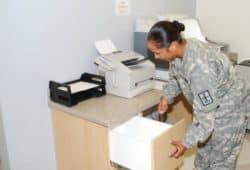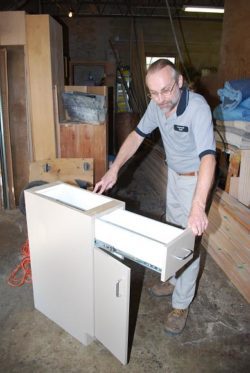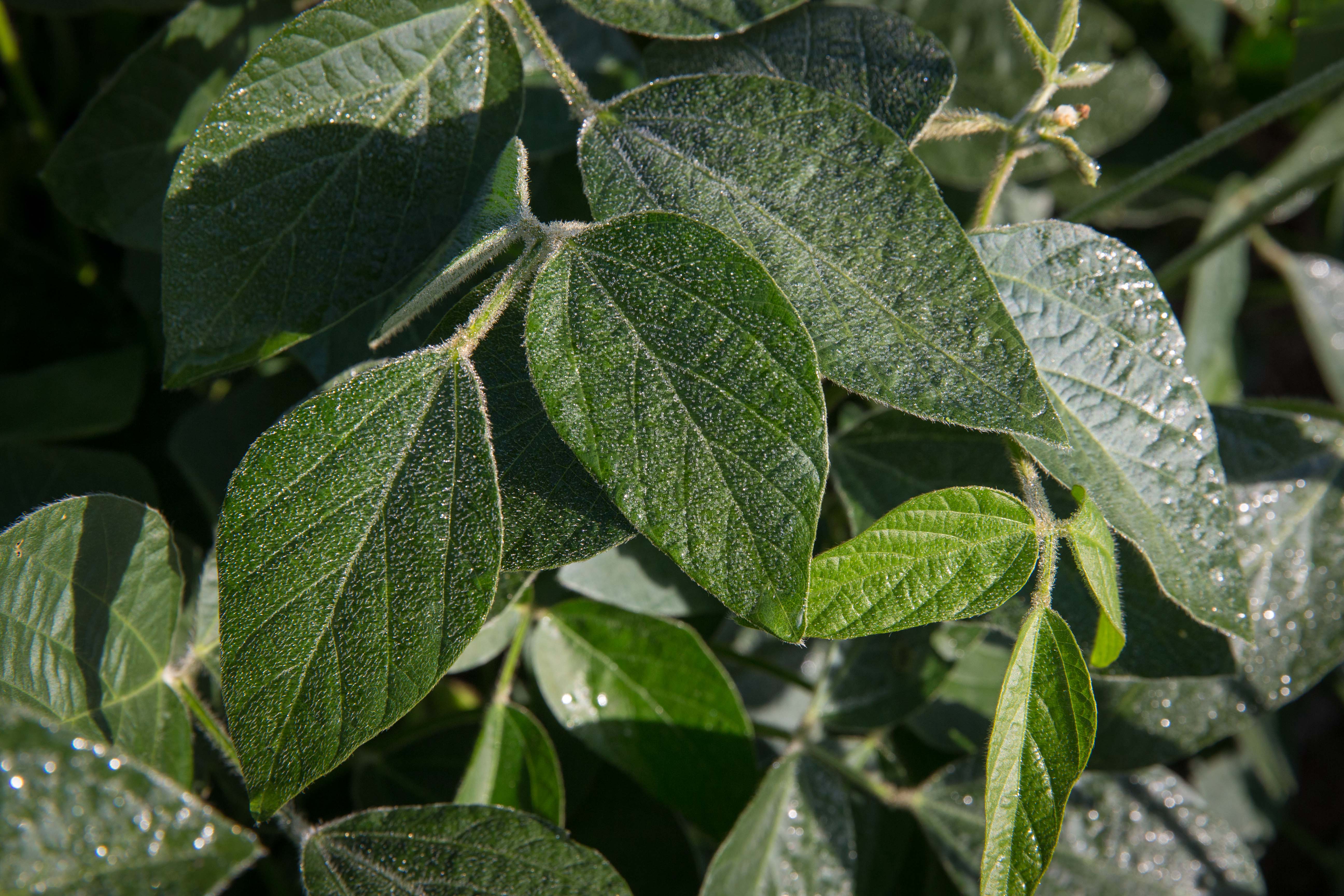For the 20 people who work in Ft. Lee’s Building 11108, it’s comforting that the cabinets throughout the building emit no formaldehyde.
That’s because formaldehyde is classified as a known human carcinogen by the National Toxicology Program, an interagency program of the U.S. Department of Health and Human Services. According to the U.S. Environmental Protection Agency (EPA), formaldehyde can also cause eye, nose and throat irritation as well as respiratory problems.

Building 11108 is the new home of the Army’s 262nd Quartermaster Battalion. The 15,000-square-feet one-story building has about 25 cabinet units scattered through seven locations in the facility. All of these cabinets are constructed with PureBond® hardwood plywood made with a soy-based formaldehyde-free adhesive from Columbia Forest Products (CFP). The North Carolina-based manufacturer reports they have made 60 million of the American-made soy-based panels.
The soy-based adhesive won the EPA’s Presidential Green Chemistry Challenge Award in 2007 because it replaces the commonly used formaldehyde adhesive. Hopewell Craft Company used CFP’s hardwood plywood to construct the cabinets for Fort Lee. One of many cabinet companies across the country using the soy-based product, Hopewell Craft is located about 10 miles from Ft. Lee. The family owned business custom builds cabinets for customers in the Mid-Atlantic region.

Similarly, Ft. Lee staffs appreciate the cabinets. “It’s comforting to know we work in a building that has better, healthier indoor air quality,” says Capt. Johnique Bowers who works in the communication equipment room.
Sgt. Sheri Helgens says, “It’s nice to know that these cabinets help keep our indoor air healthier. My husband and I own a farm in southwest Iowa so it’s also good to know that maybe some of our soybeans have gone into making these cabinets.”
LEED Certifiable
Being formaldehyde-free, the cabinets contribute to points under LEED, or Leadership in Energy and Environmental Design, an internationally-recognized green building certification system established by the U.S. Green Building Council. LEED provides third-party verification that a building was designed and built using strategies aimed at improving performance across multiple areas: energy savings, water efficiency, CO2 emissions reduction, improved indoor environmental quality, and stewardship of resources and sensitivity to their impacts. LEED has several levels of certification for new buildings.
All new construction of Department of Defense (DOD) facilities must be LEED Silver Certifiable. The DOD LEED certification policy is in response to two Executive Orders implemented by the Bush and Obama Administrations and two laws passed by Congress is 2005 and 2007.
The cabinets helped Building 11108 be LEED certifiable in three ways:
- Because cabinets are made with hardwood plywood that uses soy-based adhesives, they contain no added formaldehyde. Therefore, the cabinets meet LEED requirements for using “Low-Emitting Materials, Composite Wood & Agrifiber Products.”
- The cabinets were fabricated in the nearby city of Hopewell, Virginia so they qualify for use of “Regional Materials.” (Local purchasing is also a Fort Lee policy.)
- The cabinets help meet Material and Resources Credit 6 – Rapidly Renewable Materials (use of rapidly renewable building materials, including adhesives, made from plants that are typically harvested within a 10-year or shorter cycle) for 2.5% of the total value of all building materials.

